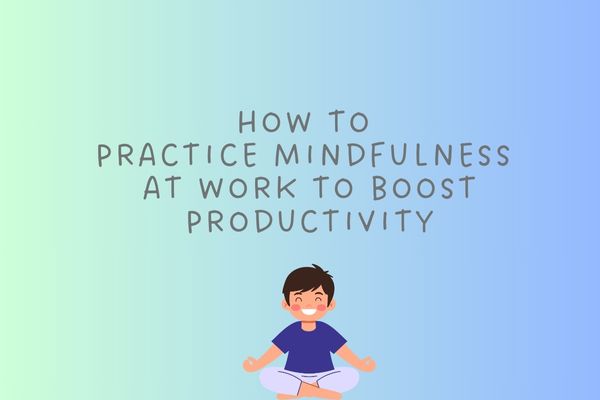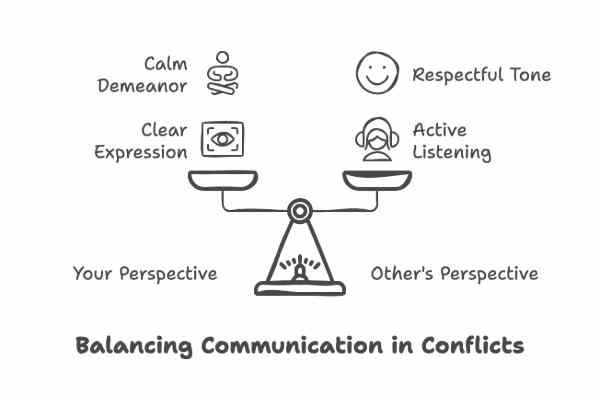Mindfulness is the art of being fully present in the moment, aware of your thoughts, emotions, and surroundings without judgment. It’s often associated with meditation, but the truth is, mindfulness can be integrated into everyday activities. By transforming daily tasks into mindfulness practices, you can reduce stress, increase focus, and enhance your overall sense of well-being.
In this article, we’ll explore ten everyday activities that can be transformed into mindfulness practices, offering you opportunities to cultivate calm and clarity throughout your day.
1. Waking Up Mindfully
The way you start your day sets the tone for the hours ahead. Waking up mindfully involves bringing awareness to your first moments of consciousness, instead of rushing into the day.
How to Practice Mindfulness When Waking Up:
- Before getting out of bed, take a few deep breaths, feeling the rise and fall of your chest.
- Notice the sensation of your body against the bed and the texture of the sheets.
- Set an intention for the day, such as “I will approach today with kindness and patience.”
Mindful waking ensures a calm and centered start, grounding you in the present before the demands of the day take over.
2. Mindful Eating
Eating is often a rushed activity, done while multitasking or distracted. Turning meals into a mindful practice can transform how you experience food.
How to Practice Mindful Eating:
- Begin by observing your food, noting its colors, textures, and smells.
- Take small bites, chewing slowly, and pay attention to the flavors and sensations.
- Pause between bites to notice how your body feels and when you start to feel satisfied.
This practice not only enhances your appreciation for food but also promotes healthier eating habits and better digestion.
3. Brushing Your Teeth with Awareness
Brushing your teeth is a daily ritual that can easily become an automatic task. By bringing mindfulness to it, you can make it a calming and grounding experience.
How to Practice Mindful Teeth Brushing:
- Focus on the sensation of the toothbrush against your teeth and gums.
- Notice the taste and texture of the toothpaste.
- Pay attention to the sounds of brushing and the rhythm of your movements.
Practicing mindfulness during this activity can help you anchor yourself in the present moment while maintaining oral hygiene.
Also check: 5-Minute Meditation Techniques for Busy People
4. Walking with Mindfulness
Walking is a simple activity that offers a powerful opportunity for mindfulness. Whether you’re moving through your home or outside, mindful walking can help you connect with your body and environment.
How to Practice Mindful Walking:
- Focus on the sensation of your feet touching the ground with each step.
- Pay attention to the rhythm of your breath as you move.
- Observe your surroundings without judgment, noticing sights, sounds, and smells.
Mindful walking turns a routine activity into a meditative practice, offering a chance to slow down and reconnect with the present.
5. Washing Dishes Mindfully
Chores like washing dishes often feel mundane, but they’re ideal moments for mindfulness. This practice helps transform a routine task into a relaxing experience.
How to Practice Mindful Dishwashing:
- Focus on the sensation of the water and soap on your hands.
- Notice the sounds of the water running and dishes clinking.
- Be fully present with each dish you wash, avoiding the urge to rush.
Mindful dishwashing can create a sense of calm and satisfaction, turning an ordinary chore into a grounding experience.
6. Practicing Mindfulness While Driving
Driving is often associated with stress or distraction, but it can become a mindfulness practice if approached with intention.
How to Practice Mindful Driving:
- Before starting the engine, take a few deep breaths to center yourself.
- Focus on the sensations of your hands on the steering wheel and your body in the seat.
- Pay attention to the road, noticing the sights and sounds around you without judgment.
Mindful driving helps reduce stress and enhances your focus, making it a safer and more enjoyable experience.
Also check: The Role of Mindfulness in Emotional Healing
7. Turning Cleaning Into a Mindful Activity
Cleaning is another task that often feels like a chore, but with mindfulness, it can become a meditative practice.
How to Practice Mindful Cleaning:
- Focus on the physical sensations of cleaning, such as the texture of a cloth or the smell of cleaning products.
- Be present with each motion, whether it’s scrubbing, dusting, or vacuuming.
- Notice the transformation of the space as it becomes cleaner and more organized.
By approaching cleaning mindfully, you can find satisfaction in the process rather than focusing solely on the outcome.
8. Engaging in Mindful Conversations
Conversations often happen on autopilot, but by bringing mindfulness to your interactions, you can deepen connections and improve communication.
How to Practice Mindful Conversations:
- Listen actively, focusing entirely on the other person’s words and tone.
- Pause before responding to gather your thoughts and avoid interrupting.
- Notice your own emotions and reactions during the conversation without judgment.
Mindful conversations foster understanding and presence, enriching your relationships and making interactions more meaningful.
9. Showering with Awareness
Showers are routine, but they can also be a perfect time to cultivate mindfulness. This practice combines physical cleansing with mental clarity.
How to Practice Mindful Showering:
- Focus on the sensation of water on your skin and the temperature.
- Notice the smell of soap or shampoo and the sounds of water droplets.
- Use the time to release any tension, imagining the water washing away stress.
Mindful showering can leave you feeling refreshed both physically and mentally.
10. Falling Asleep Mindfully
The moments before sleep are often filled with racing thoughts or distractions. Turning bedtime into a mindfulness practice can improve your sleep quality and help you unwind.
How to Practice Falling Asleep Mindfully:
- Lie in bed and focus on your breath, feeling the rise and fall of your chest.
- Perform a body scan, noticing any tension and consciously relaxing each part of your body.
- Let go of the day’s worries by visualizing them drifting away like clouds.
Mindful falling asleep promotes relaxation, helping you transition smoothly into rest.
How to Cultivate Consistency in Mindful Practices
Incorporating mindfulness into everyday activities is a gradual process that requires consistency. Here are some tips for maintaining a regular practice:
1. Start Small
Choose one or two activities to practice mindfulness with and focus on them daily. Over time, you can expand to more activities.
2. Set Reminders
Use alarms, sticky notes, or mindfulness apps to remind you to stay present during specific tasks.
3. Be Patient
Mindfulness takes time to develop. If your mind wanders, gently guide it back to the present moment without judgment.
4. Reflect on the Benefits
Notice how mindfulness enhances your sense of calm and focus, reinforcing your commitment to the practice.
The Power of Mindfulness in Daily Life
Mindfulness doesn’t require extra time or effort—it’s about bringing awareness to what you’re already doing. By turning everyday activities into mindfulness practices, you can create moments of peace and presence throughout your day.
These ten activities offer a starting point for cultivating mindfulness, transforming the mundane into meaningful experiences that enrich your life. Whether it’s waking up, eating, or cleaning, each moment holds the potential for mindfulness when approached with intention and awareness.






